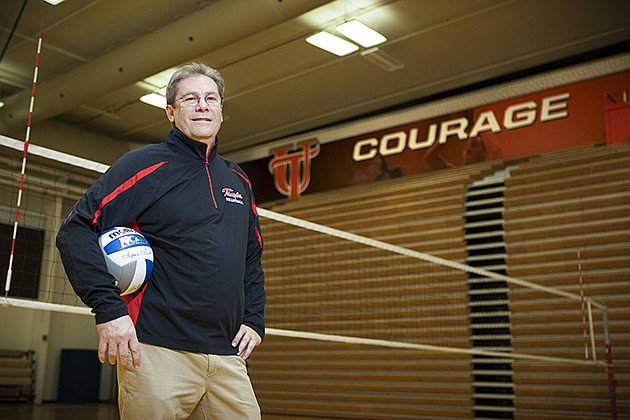- November 24, 2024
-
-
Loading

Loading

Chris Catanach knows how to find and attract talent. The women's volleyball coach at the University of Tampa has spent three decades not only recognizing players that might be a fit for the school, but then persuading those players to choose Tampa over other high-profile schools with bigger budgets and fancier facilities.
“You have to have a special tie-in,” Catanach says. “You can't just recruit 100 kids and hope to get one. You have to dial in on kids that have a connection to the university in some way, a connection to the area or even to the division. Those are the kids who have the best shot.”
Catanach has used his recruiting prowess to build winning teams — the Spartans claimed their second Division II national championship in December.
Yet, Catanach has limited resources in finding those players. With just 10% of his budget focused on recruitment, Catanach might spend up to $3,000 on a single player to get her on the roster.
“The entire process can take two to three months, but every day is important,” he says.
And the most important part of that process is the campus visit: putting a prospect on a plane, and showing UT at its best.
“You can see pictures, you can watch videos online, but nothing tops physically walking onto a campus,” Catanach says. “Meeting people, shaking their hands, visiting buildings for yourself, it makes a difference.”
A campus visit is also a chance to sell the area. Highlighting community amenities and attractions, such as Busch Gardens or popular hot spots like Ybor City, can build excitement for young recruits.
In the end, the make-or-break when it comes to recruitment isn't persuading an athlete, it's persuading a parent — something that often is overlooked. For business managers, it's not parents who need to be won over, but spouses, boyfriends and girlfriends, and sometimes even children. If those important to a prospect aren't convinced, then a potential athlete — or employee -- won't be convinced, either.
All of that is wrapped in providing a positive experience, Catanach says, where the merits of an organization are highlighted without the need to openly compare them to others.
“It's easy to put down another school and its program, but that's not a good tone to set when you're trying to build interest from a prospect,” Catanach says. “We're going to spend more time selling them on what we can do, not on what our opponents can't do.”
- Michael Hinman